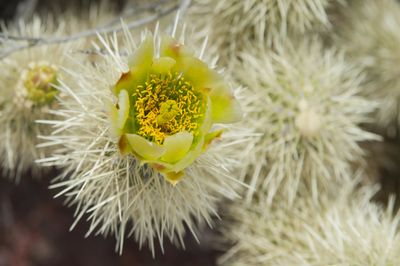Keep in mind, however, that while the cactus looks harmless from a distance, the spines are formidable. In fact, its other common name “jumping cholla” is well deserved, as the spines seem to “jump” and grab unsuspecting passers-by. Read on for more jumping cholla info.
Jumping Cholla Information
Native to the deserts of Northwest Mexico and the southwestern United State, jumping cholla (Opuntia bigelovii syn. Cylindropuntia bigelovii) is a shrubby, tree-like cactus that can reach heights of 5 to 9 feet (1.5 to 3 m.). The spines are silvery-gold when young, turning dark brown or black with age. The plant propagates itself easily when the joints fall off or are inadvertently knocked off by people, a passing animal or even strong wind. The result, eventually, is a large, impressive stand of cactus.
How to Grow Jumping Cholla Cactus
As with most outdoor cactus, there is little jumping cholla care involved. If you’re interested in growing teddy bear cholla, be sure you can provide desert-like conditions. This cholla cactus won’t survive without dry soil and plenty of bright sunlight. Jumping cholla requires warm temperatures and several hours of bright sunlight every day. Like most desert plants, jumping cholla won’t survive in soggy conditions. Its soil must be dry and fast-draining. Teddy bear cactus requires very little supplemental water. Too little moisture is always preferable than too much. Feed teddy bear cactus occasionally using a granular fertilizer formulated for cacti and succulents, or a diluted solution of any good quality water-soluble fertilizer.
